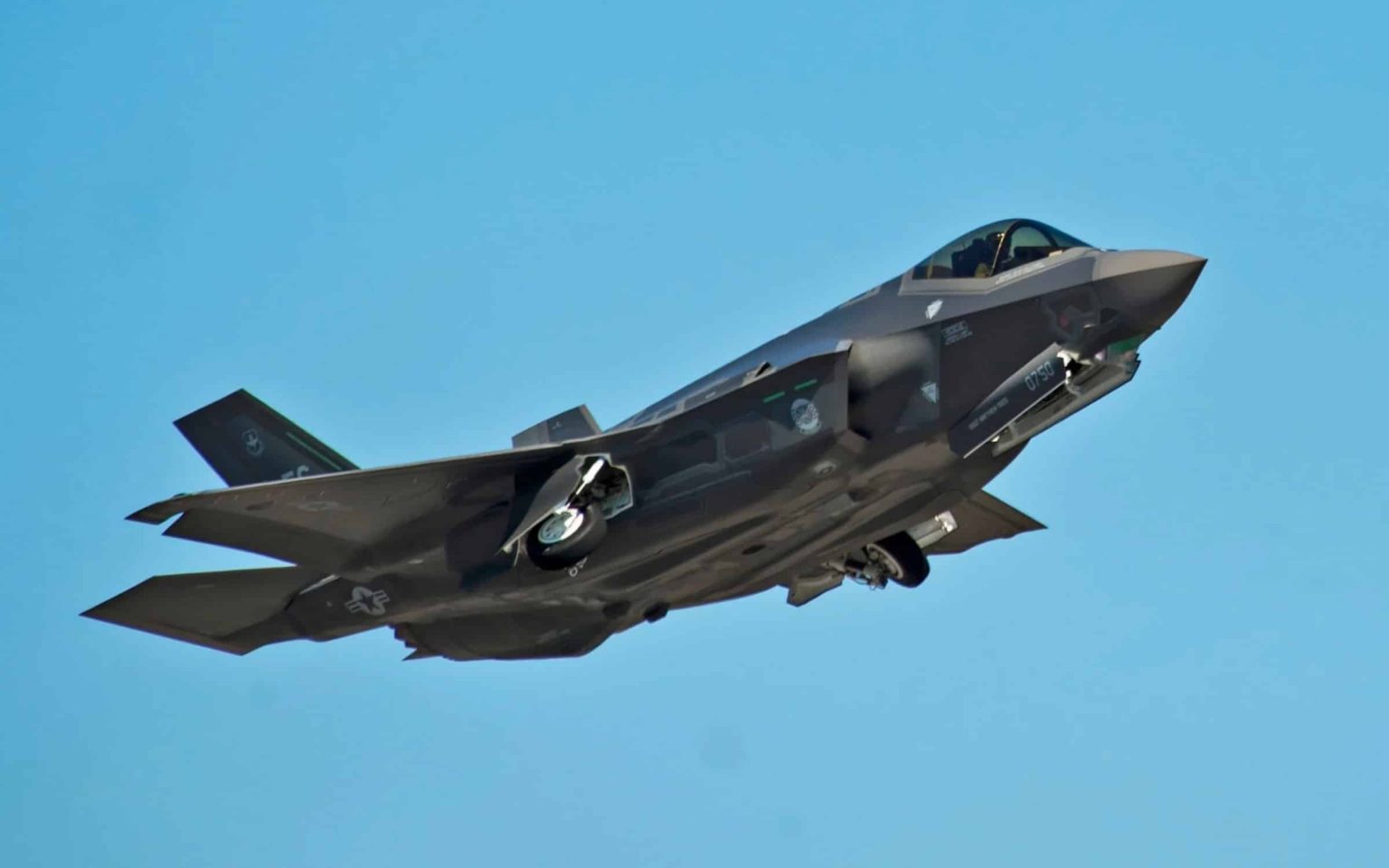
The plan is in place. The Lockheed Martin F-35C stealth fighters are entering service. The logistics are taking shape. Marines are training for the mission. But the missing component is a big one. Flying inside Chinese-controlled air space is extremely dangerous. The Marine pilots need help.
They’re about to get it. California drone-maker Kratos has been developing an experimental high-performance fighter drone for the US Air Force. Now the Marines are getting, for their own trial purposes, a version of the XQ-58 drone – one whose main mission is to jam or destroy enemy radars in order to protect manned fighters from ground-based air-defenses.
Kratos announced the Marines’ MQ-58B version of the 27-foot-wingspan, subsonic drone on April 2. The highly-autonomous drone’s “electronic-attack” system – in essence, targeted radio noise-makers that can confuse enemy radar-operators – “promises to increase the lethality and survivability of our current crewed platforms,” Marine lieutenant colonel Bradley Buick said.
The idea is for MQ-58Bs, flying singly or in swarms, to clear a flightpath for the supersonic F-35Cs to strike Chinese air bases, ports, headquarters and other strategic targets. If a few MQ-58s get shot down while performing their dangerous task, it’s no big loss.
An MQ-58 is designed to be mass-producible and thus cheap at just one or two million dollars, compared to the $100 million an F-35C costs. And where losing an F-35C might also mean losing its pilot, there’s no one aboard an MQ-58B. It’s “attritable,” to borrow a term that’s in vogue in the Pentagon.
The electronic-attack drone fits neatly into the Marines’ new strategy for waging war in the Pacific. Noting the extreme distances and the relative dearth of US bases that define the region, a few years ago the Corps wrote a new doctrine it called “Expeditionary Advanced Base Operations.” It’s basically World War II’s island-hopping strategy, but with new high-tech elements.
Small assault ships, sailing incognito among civilian commercial ships, would land small teams of Marines – a few hundred here, a few hundred there – on some of the tiny islands that dot the western Pacific. The Marines would set up sensors and missile-launchers and, on the bigger islands – say, in The Philippines – pour concrete for a small runway.
Any 6,000-foot stretch of defensible concrete can support one of the Marines’ F-35Cs, which are variants of the basic F-35 with bigger wings and slightly greater range. The F-35C can operate to and from runways or by catapult and arrester wire from the US Navy’s full-size supercarriers. The Marines also operate the F-35B, the vertical-thrust version of the jet: this can operate from amphibious ships without cats and traps, or from very short runways ashore. The F-35B lacks fuel capacity and range, however, and would be unsuited to long-haul missions deep into Chinese air space. F-35Cs, by contrast, could travel in thousand-mile leaps, landing to refuel at some island outpost before continuing their sorties.
“This is all a time-distance-fuel problem,” said Lt. Col. Michael O’Brien, commanding officer of Marine Fighter-Attack Squadron 314, an F-35C squadron flying out of California.
The MQ-58Bs should have no problem keeping pace. Taking off from a short ramp with the assistance of rocket-boosters, and landing vertically by cutting its engine and popping a parachute, an MQ-58B can operate from even the smallest island outpost. And because it carries enough fuel for a 3,000-mile trip, there’s no need to refuel it mid-mission.
The drone “provides unmatched operational flexibility,” Kratos claimed.
If there’s a big variable in this new fighter-drone strike complex, it’s autonomy. The Marines assume their island outposts, and any forces that operate from them, must maintain radio-silence in order to avoid detection by passive receivers.
That means the MQ-58B can’t maintain a direct link to operators in the air or on the ground. Its onboard artificial intelligence needs to make most of the decisions as the drone hunts for, and suppresses, enemy radars.
It should come as no surprise, then, that Kratos and the Air Force mostly have focused on the MQ-58’s AI since launching development of the drone back in 2020. The airframe, by comparison, is fairly simple.
After years of work, the airframe is mature. The AI isn’t. It wasn’t until July of last year that the Air Force first freed an XQ-58 to fly under an AI’s control.
That first AI flight, lasting just three hours, was successful. But there’s still a lot of work left to be done. It took millions of hours of virtual test flights, in computer simulations, to prepare the XQ-58 for its first autonomous flight. It might take millions more to get the drone ready for combat.
It’s not for no reason that the Marines still haven’t announced a large-scale purchase of the MQ-58, or a timeline for introducing the drone into front-line service. The radar-hunting MQ-58 could become an indispensable part of the Marines’ Pacific war plan: watch this space.
Broaden your horizons with award-winning British journalism. Try The Telegraph free for 3 months with unlimited access to our award-winning website, exclusive app, money-saving offers and more.



